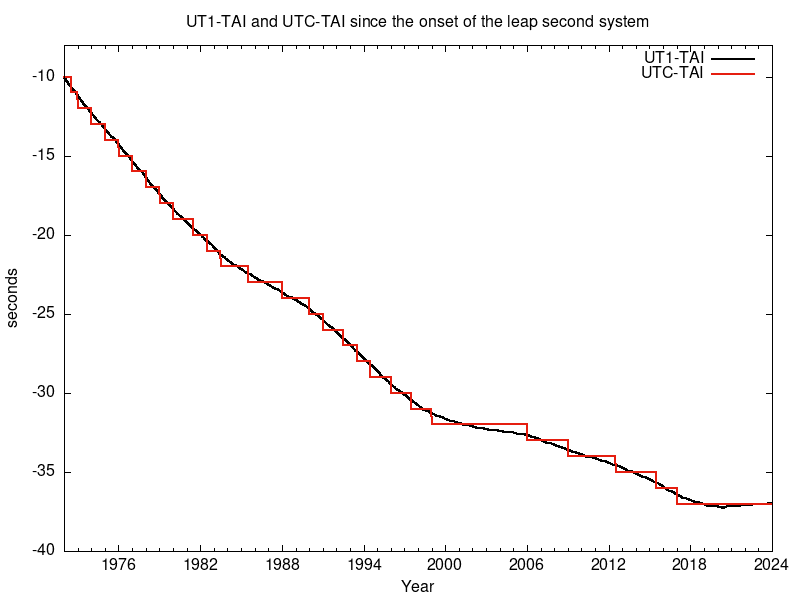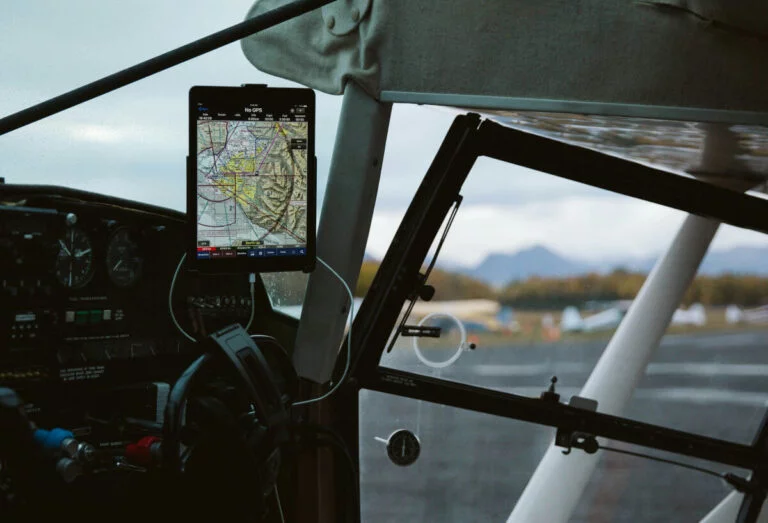What is GPS Time?
GPS time is a time scale maintained by the atomic clocks of satellites and ground control stations of the Global Positioning System (GPS). It consists of a count of weeks and seconds of the week since 0 hours (midnight) Sunday, 6th of January 1980.
It is a continuous time scale and does not adjust for leap second insertions. This means it doesn’t account for periodic leap second insertions to UTC time. Therefore, GPS time is ahead of Coordinated Universal Time (UTC) by a certain number of seconds. As of the time of this article (24th of April 2024), it was ahead of UTC by 18 seconds.
Please note that the difference between GPS time and UTC may have changed since then due to the insertion of leap seconds into UTC.
What is UTC (Coordinated Universal Time)?
UTC, or Coordinated Universal Time, is the time scale that is used worldwide to coordinate technical and scientific activities. It is a compromise between the highly stable atomic time and the irregular Earth rotation1.
UTC is the primary time standard by which the world regulates clocks and time. It is one of several closely related successors to Greenwich Mean Time (GMT). Here are some key points about UTC:
- Atomic Time Basis: UTC follows International Atomic Time (TAI), which is based on the output of approximately 200 atomic clocks worldwide.
- Leap Seconds: To keep UTC in sync with the Earth’s rotation, leap seconds are added occasionally, creating a minute with 61 seconds.
- UT1 Measurement: The average speed of Earth’s rotation is measured by Universal Time (UT1), and when the difference between UTC and UT1 approaches 0.9 seconds, a leap second is added.
- Timekeeping Accuracy: While atomic clocks are incredibly consistent, the Earth’s rotation varies, so UTC helps maintain a balance between atomic time and the average length of a day on Earth.
For more detailed information, you can refer to the International Earth Rotation and Reference Systems Service (IERS) website
What is a leap second?
Leap seconds are added to Coordinated Universal Time (UTC) to account for the slight variations in Earth’s rotation2. The decision to add a leap second is usually made when UTC is ahead of UT1 (a time scale based on Earth’s rotation) by 0.4 seconds or more3.
Since the corrections started in 1972, there have been leap seconds about every year and a half on average. However, the actual frequency of leap seconds can vary as the Earth’s rotation speed fluctuates constantly. All leap seconds so far have been inserted at the end of either June 30 or December 314.
As of mid-2023, UTC was 37 seconds behind International Atomic Time (TAI), which means that adding a leap second every three years would be necessary if Earth spins at a rate such that 86,400.001 SI (TAI) seconds fit into a mean solar day5.

Please note that the International Earth Rotation and Reference Systems Service (IERS) announced in January 2024 that no leap second will be introduced at the end of June 2024. The next possible date is December 31, 2024. However, the Earth’s rotation has been relatively fast lately, so it is unlikely that any leap seconds will be added in the near future.
Uses of GPS Time
GPS time is used in a variety of applications, primarily in navigation and positioning systems. The GPS receivers use the time stamp in the GPS signal to calculate the distance between the receiver and the satellite, which is then used to determine the receiver’s position on Earth. This is possible because the speed of light is constant, and the time it takes for the signal to travel from the satellite to the receiver can be converted into distance.
Importance of GPS Time in Land Surveying
In land surveying, accuracy is paramount. GPS time plays a crucial role in achieving this accuracy. By using GPS time, surveyors can measure distances with an error of less than a few centimeters. This is because the GPS signals from multiple satellites can be used to triangulate the exact position of the receiver. The time stamp in the GPS signal allows the receiver to calculate the exact distance to each satellite, and hence determine its precise location.
Moreover, it allows for real-time data collection, making land surveying more efficient. It also enables the integration of survey data with other geospatial data, facilitating more comprehensive land analysis.
Calculating GPS Time from UTC
To calculate GPS time from UTC, you need to know the current number of leap seconds. As of April 2024, it was ahead of UTC by 18 seconds. However, this difference may have changed due to the insertion of leap seconds into UTC. Once you know the current number of leap seconds, you can calculate GPS time by adding the number of leap seconds to the current UTC time.
GPS time from UTC example
Calculating GPS time from UTC time is simple. This is done by adding the number of leap seconds to the UTC time.
Let’s say the current UTC time is 12:00:00 on 1st January 2023 and the current number of leap seconds is 18 seconds (in April 2024).
To calculate the GPS time from this UTC time, you would add the number of leap seconds to the UTC time. So, the GPS time would be 12:00:18 on 1st January 2023.
Please note that the number of leap seconds can change as they are occasionally added to UTC to account for variations in Earth’s rotation. Therefore, always make sure to use the most recent number of leap seconds for accurate calculations. Also, remember that GPS time does not account for leap seconds, so it steadily increases without any discontinuities.
This is a simple example and actual implementation might require conversion of date and time to GPS weeks and seconds format. Always refer to the latest GPS Interface Specifications for accurate conversions.
Conclusions & references
In conclusion, GPS time is an essential component of the Global Positioning System. It is used in various applications, including land surveying, where it provides the accuracy needed for precise measurements. Calculating GPS time from UTC involves knowing the current number of leap seconds and adding this to the current UTC time.

